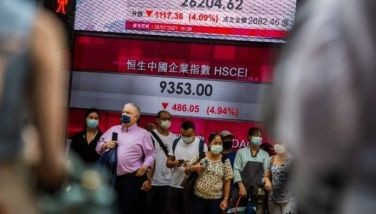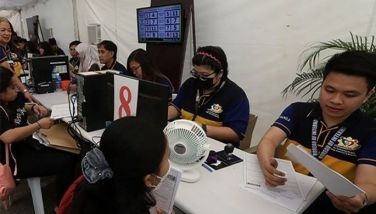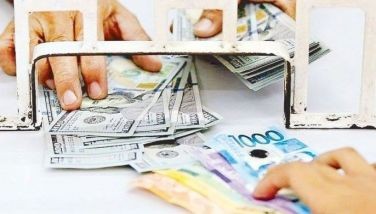Averting a looming crisis

Buried under the rubble of the raging pandemic is a potential energy disaster the Philippines is in danger of getting itself into.
Indonesia, from which the Philippines imported 70 percent of its coal requirements in 2020 and is the world’s biggest thermal coal exporter, ordered a ban on the export of coal last Jan. 1 after its state power utility reported dangerously low inventory levels at its domestic power stations.
Energy Secretary Alfonso Cusi has appealed for Indonesia to rescind the ban since this spells doom to countries heavily dependent on coal for power generation. Indonesia, however, is not likely to change its mind.
Power generated by coal comprises about 60 percent of the Philippine’s power mix. In 2021, the country sourced 2.3 million tons per month from Indonesia to fuel its power plants.
We would not have to face such emergency had the Energy World Corp. (EWC) been allowed to have its liquified natural gas (LNG) hooked up with the existing transmission grid, which could have provided instant power to the Luzon grid. Unfortunately, despite the technical and financial feasibility of such arrangement, the appeal was successfully opposed by those who want the country to continue to be dependent on coal for power generation.
The EWC project has had to hurdle protracted bureaucratic red tape and cold-shoulder support from government. The company is now building its own transmission line and switching station in order to connect the plant to the main grid. Once operational, EWC intends to install a 200 megawatt steam turbine. Similarly, the final stages of development of its 2-MTPA LNG facility are on track.
Many countries have already embraced the strategy of harnessing natural gas as a crucial passage to a carbon-less future. The road to stabilize climate change is a dramatic reduction in global greenhouse gas emissions. To do this, we must eliminate almost all use of fossil fuels.
Natural gas is an excellent bridge fuel. Its carbon emissions are much lower than coal.
According to the International Renewable Energy Agency (IRENA), renewables like wind farms and solar installations provide some of the cheapest electricity available, but only generate when there is sufficient sunshine or wind. Natural gas, on the other hand, can overcome the intermittency issues inherent in renewables, fueling a stable electricity supply that can be easily be switched on and off to stabilize the grid.
While renewable generating capacity is growing fast, it is not growing fast enough. At the global level, renewables, including wind solar and hydropower, was set to increase by more than eight percent in 2021 and six percent in 2022, but this robust growth will only meet half of the projected growth in energy demand over this two year period, according to the IEA. Natural gas will be needed to bridge the gap.
Natural gas is also a flexible fuel. It also has heating, industrial, commercial, and transport applications.
What happens in the future is, of course, uncertain, which could leave potential investors nervous about commissioning new natural gas power stations that need a 20 to 40 year life-span to maximize returns. New technologies offer a solution where it is possible to look for a hydrogen future by developing dual-fuel power plant turbines capable of combusting both natural gas and hydrogen.
This means power plant operators can use the same turbines with natural gas today and hydrogen tomorrow. As these turbines can be fueled with clean hydrogen transformed by surplus renewables, they are both good for the environment and also help meet the growing future global demand for energy.
Hope for migrant workers
As 2021 drew to a close, President Duterte signed two landmark pieces of legislation that we should all pay attention to.
The first one was the 2022 national budget. The other represented the first few steps towards fulfilling a campaign promise he made alongside former House Speaker Alan Peter Cayetano when the pair were running for president and vice president in 2016 – the creation of the Department of Migrant Workers.
However, Cayetano has said that passing Republic Act 11641 isn’t the end of the proverbial marathon, by any measure. The DMW, after all, still exists only on paper as long as there is no Cabinet-level secretary appointed to get things going in the agency.
Cayetano, who was the former Foreign Affairs Secretary, said that setting up a new executive department could take an entire year, a timeline he warned could be complicated by the 2022 campaign season, as nearly all elected government officials go into election mode.
This is where political will becomes crucial. Whoever gets to exercise the political will to get the DMW up and running, however, is anyone’s game.
A functioning Migrant Workers department should be part of President Duterte’s legacy as he prepares to leave Malacañang in June.
Setting up the DMW in its last few months in power will allow the current administration to shape the agency and how it is run by future dispensations. It also sends a strong signal to the millions of overseas Filipino workers that their government isn’t leaving their rights and welfare to chance, and that Malacañang is serious about looking out for and supporting Filipinos wherever they are in the world.
Cayetano has challenged the Malacañang aspirants to include the establishment of the department as a priority in their first 100 days, whoever among them emerges as the next president.
The DMW Act lumps together the Philippine Overseas Employment Administration and offices specifically catering to OFW concerns, currently under the Overseas Workers Welfare Administration, Department of Labor and Employment, Department of Foreign Affairs, and Department of Social Welfare and Development.
According to Cayetano, one of the main proponents of the DMW Act, the agency shall centralize all government programs and offices serving OFWs, the need for which he realized during his stint as foreign affairs secretary.
The manpower and basic infrastructure for the DMW already exist. Building an executive agency from the ground up will never be simple nor easy, but the DMW isn’t exactly being built from scratch.
The millions of Filipinos working overseas, whose remittances and collective sacrifice have arguably tided over our country through the worst of the pandemic-induced downturn, deserve an up and running DMW.
For comments, e-mail at [email protected]
- Latest
- Trending































